On Finding and Defending Our Creative Standards
Gluten-free muffins, Ira Glass, and threading the needle between taste and ability
The only cookbook I owned as a girl was a series of recipes from my American girl doll, Samantha. Orphaned and forced to live with a wealthy grandmother in 1904, Samantha lived the life of my dreams. She wore special dresses for dinner and her milk came served inside a crystal wine goblet. Dinner was served on silver platters with matching cloches and I suspect her carrots did not smell of chlorine like mine did. Samantha was as good as the getting got in my estimation.
There was one recipe in that book that looked approachable: golden-domed blueberry muffins with real pats of butter sliding off the piping hot peaks. They were served on a white china plate with small painted violets. I’d seen something like this in Mom’s kitchen before, so one day I decided to give it a go.
Eager to finish the process before I’d even started, I grabbed a box of Betty Crocker muffin mix and a bunch of baking stuff that was loose, white, powdery, and messy. There was an egg and probably a third cup of oil. Simple is overselling the process. I blindly “measured” everything in the green retro measuring cups my mom kept stuffed in a spare drawer. And an hour or so later, there they were: blueberry muffins.
At first bite, my body seized up as a dry, chemical taste spread across my tongue and down my gullet. Salt in place of sugar. Or was it too much baking soda? Not only were these balls of ash inedible, they had cost me a whole afternoon. Baking could not, it seemed, hold a candle to that phantom self who lived and cooked without consequence in my imagination.
It would be a decade before I attempted muffins again. By that time I was settled and married; not an orphan and not dripping in diamonds, but also no longer afraid of muffin tins. I needed something for teatime and Liz Prueitt’s recipe for lemon loaf sounded nice.
I paid careful attention this time to all the different colored powders, the cups, and the baking time. The result was divine enough to open my mind to the millions of ways it could be altered and made to fit my personal tastes more. I tried making the loaf with lavender once but it tasted soapy. Another time I separated the yolks from the whites and beat the whites to a stiff peak before adding it to the rest of the batter: fluffier, but also fussier. I tried chia seeds in place of poppies. I added more lemon juice, more zest, and a touch more salt.
This continued for years, eight more years to be exact. The longer I practiced, the more the gap between my imagination and my ability closed; not fast, not even easily, but slowly and quietly, without much notice on my part. Then, one day, all those years later, I poured the loaf batter into a muffin pan, and it made an absolutely wonderful batch of muffins. It was nothing like my American girl recipe, because it was finally what I had always wanted it to be: mine.
This quote by Ira Glass explains the process of creativity better than anything I’ve ever read.
“Nobody tells this to people who are beginners, I wish someone told me. All of us who do creative work, we get into it because we have good taste. But there is this gap. For the first couple years you make stuff, it’s just not that good. It’s trying to be good, it has potential, but it’s not. But your taste, the thing that got you into the game, is still killer. And your taste is why your work disappoints you. A lot of people never get past this phase, they quit. Most people I know who do interesting, creative work went through years of this. We know our work doesn’t have this special thing that we want it to have. We all go through this. And if you are just starting out or you are still in this phase, you gotta know it’s normal and the most important thing you can do is do a lot of work. Put yourself on a deadline so that every week you will finish one story. It is only by going through a volume of work that you will close that gap, and your work will be as good as your ambitions. And I took longer to figure out how to do this than anyone I’ve ever met. It’s gonna take awhile. It’s normal to take awhile. You’ve just gotta fight your way through.”
I spent several years agonizing over a single book manuscript I’d written before realizing it was bad. One day, I stood back to look at my work, the fruit of many days, weeks, months, and years, and felt my taste say that only a single sentence of the 80,000 words was truly good. I was devastated.
I contemplated becoming a plumber then. I wondered if I missed my calling as a figure skater or mom of twelve. I thought it took a particular kind of stupidity to work so hard and long at something that an eighth grader could have written.
Then I went to badger my husband. I cried while telling him how bad my book was and relayed to him the work required to fix it. He was quiet and respectful before he spoke. When he did, he said, very simply and resolutely, that I could do it. I could write and finish a truly good book.
I wanted to laugh. And I wanted to cry even harder because the thought of writing a “truly good book” had become as appealing as chewing my arm off. I asked him how he could have so much faith in a loser such as I (not an exact quote) and he said eight words which have loved me well ever since: “Because you don’t give up on getting better.”
There are a lot of ways to fail as an artist: addiction, alcoholism, lack of focus, burnout, unhealed trauma, toxic relationships, self-sabotage, ego, perfectionism, etc, etc. I see them every day in LA and have fallen victim to many myself. But one thing seems to reign supreme and it is this: the abandonment of that “killer taste” we were born with.
Often, we don’t mean to do it. We cut corners because of taxes, bills, disease, death, kids, parents, political unrest, and other unexpected travail. This is to say nothing of the awful feeling of malaise that sets in when, for years, you are forced to trod through the desert of your work. Some days the very last thing I want to do is be faithful to my taste which worships Mary Oliver, american cheese, ketchup, Marilynne Robinson, George Saunders, Monet, Degas, and my Celine handbag.
But to do this, to give up on our true creative instincts, is to resign ourselves to a slow and painful death. No matter how ridiculous our taste sounds to the world, we must not give up on it, not for all the money in the world. I am saying this as someone whose highest creative aim was once to be a rich young orphan girl or a Mexican (Josephina was my other favorite American Girl Doll): do not forget your standards, for they are your compass in a world that has none.
Baking helps, for in baking we put ourselves back in touch with the physical palate we were born with. We learn what we like tangibly: bright, nutty, complex, buttery, crisp, nostalgic, bitter, light, crunchy, airy, boozy, smooth, deep, or velvet. And while baking may not make the creative journey any easier, I guarantee you it will make it much more delicious.
Gluten-Free Lemon Poppyseed Muffins adapted from Liz Prueitt’s Lemon Loaf
Ingredients
4 eggs
130 grams or 3/4 cup maple sugar or granulated sugar
1 TBS coconut flour
1/4 cup water
130 grams or 3/4 cup grams melted butter
2 TBS olive oil
zest of 2 lemons
2 lemon’s worth of juice or 1/3 cup lemon juice
1 splash of vanilla or almond extract
360 grams or 3 cups almond flour (any kind, but blanched is best)
25 grams or 1/4 cup poppy seeds
35 grams or 1/3 cup brown rice powder
1 tsp baking powder
3/4 tsp salt
Special Tools
Stand mixer
Measuring cups or a scale
Small measuring bowls
Spatula
Muffin tray for 12 muffins
Muffin Liners
Technique
Melt butter // 3-4 min //
In a small saucepan over medium heat, melt 130 grams (3/4 cup) of butter. Once it begins to hiss and sputter and there are no lumps of hardened yellow fat left, turn off the heat off and let it cool.
Preheat oven // Turn oven to 350℉.
Measure wet ingredients // 2 minutes //
In a small bowl, measure out 1 TBS of coconut flour and 1/4 cup of water and mix until it forms a soft, white paste and no lumps remain. In another small bowl, combine 2 TBS olive oil and a splash of almond or vanilla extract. Set aside both. Once the butter has cooled and is lukewarm to the touch, combine all three bowls into one.
Combine zest and sugar // 3-4 minutes //
In the stand-up mixer bowl, combine the zest of two fist-sized lemons and 130 grams of maple sugar. Rub the zest and sugar between your fingers to release the oil from the zest. Set aside.
Sift and combine dry ingredients // 2 minutes //
Combine 360 grams (3 cups) almond flour, 25 grams poppy seeds (1/4 cup), 35 grams brown rice flour (1/3 cup), 1 tsp baking powder, and 3/4 tsp salt. If the almond flour has clumped and formed little pebble-like balls of flour, then mix everything with your hands, softening any clumps between your fingers. Otherwise, a small whisk should combine things just fine.
Beat eggs, sugar, and zest // 3-4 minutes //
Add all four eggs to the bowl in the stand mixer with the sugar and zest. Turn the mixer to medium-high and for several minutes, beat the mixture until it forms a mousse-like, slightly whipped texture. To me, it looks a bit like hair mousse when finished.
Add wet and dry ingredients // 3-4 minutes //
In three to four batches, add the wet ingredients to the sugar-zest-egg mix, beat, and then alternate with the dry ingredients. Continue until everything is combined, careful to keep the heat on medium-low to prevent catastrophe.
Taste the batter
If you aren’t afraid of disease, taste the batter. It should be sharp, sweet, and lovely. If not, feel free to add a pinch more salt for contrast, a squeeze more lemon, or a bit more sugar.
Fill muffin tins
Once the mixture is finished, add muffin liners to the muffin tin and fill with the batter. Don’t fear the batter coming up to the fill line, these won’t overflow once baked.
Bake and cool muffins // 35 minutes to cook + 10 minutes to cool //
Bake in the center of the oven until a toothpick or butter knife comes out dry—about 36 minutes for me. Set on the counter to cool for about ten minutes. Then eat with butter or yogurt.
Store
Keep muffins in a sealed container in the fridge. They will be tasty and fresh for about a week.
Notes
On making this fluffier…
You can separate the egg whites and yolks and prepare them separately for a slightly fluffier texture. Cream the yolks with the sugar, wipe out the bowl, and beat the egg whites to stiff white peaks, folding them in as the very last step. I’d say this adds about ten minutes to your work.
On using regular ole’ almond meal…
I can attest that regular almond meal is fine but it is somewhat drier and grittier. I do think that blanched almond meal has a smoother, richer, cleaner flavor which lends itself much better to moisture. But you can get by with regular almond meal, of course.
On making it a loaf…
These muffins can be made into a loaf. You will need to grease your loaf pan very generously with butter or oil and cook it at the same temperature (350℉ ) for about an hour. The top will become very deep golden brown but sometimes the center turns out a little more moist than the muffins. Both are very good.
On eating these with vanilla goat yogurt…
I think the best way I’ve had these is crumbled into some vanilla yogurt. Try it, it is just divine.
On making a glaze…
For a slightly more desert-like spin, I mix the juice of 1 lemon and three to four TBS powdered sugar for a light glaze to go on top. This adds just a hint of sweetness and extra moisture. To make, I like to sift the powdered sugar into the lemon juice to avoid lumps. I also poke a few holes in the dome of the muffin before brushing the mixture on top.
On the neverending journey of this muffin…
Of course, after finishing this article and taking pictures, I had a gluten-free poppy seed muffin at Thorne Farm in Malibu which had a much better texture than my finished product. It was much lighter and airier than my muffin. It also tasted less dense and somehow also less dry. First, then humbled and frustrated me, but then it gave me yet another idea to take with me back into the kitchen.
Edits by Lauren Ruef
Pictures by Tony Anderson

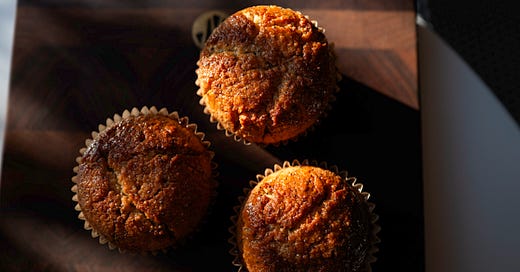



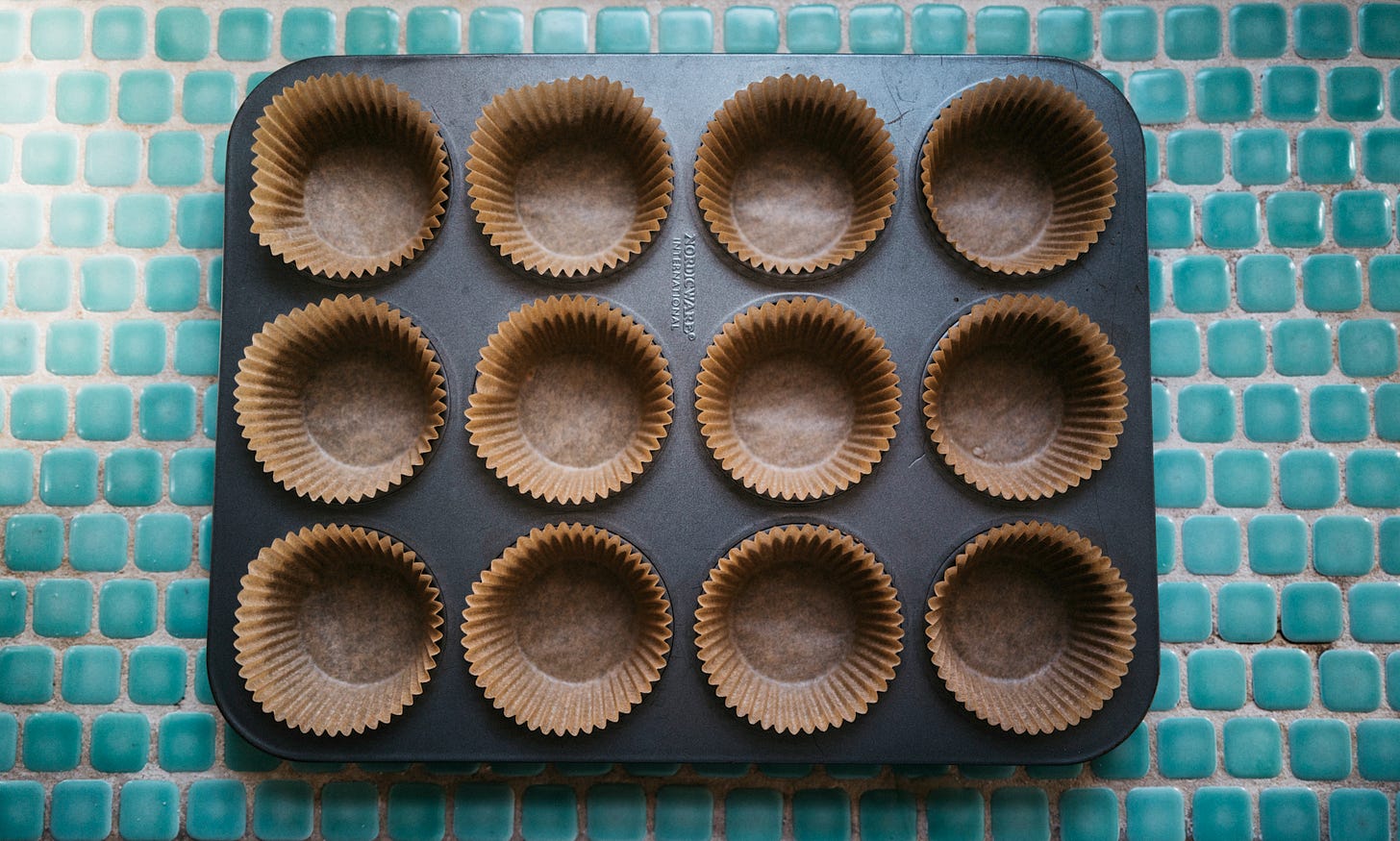
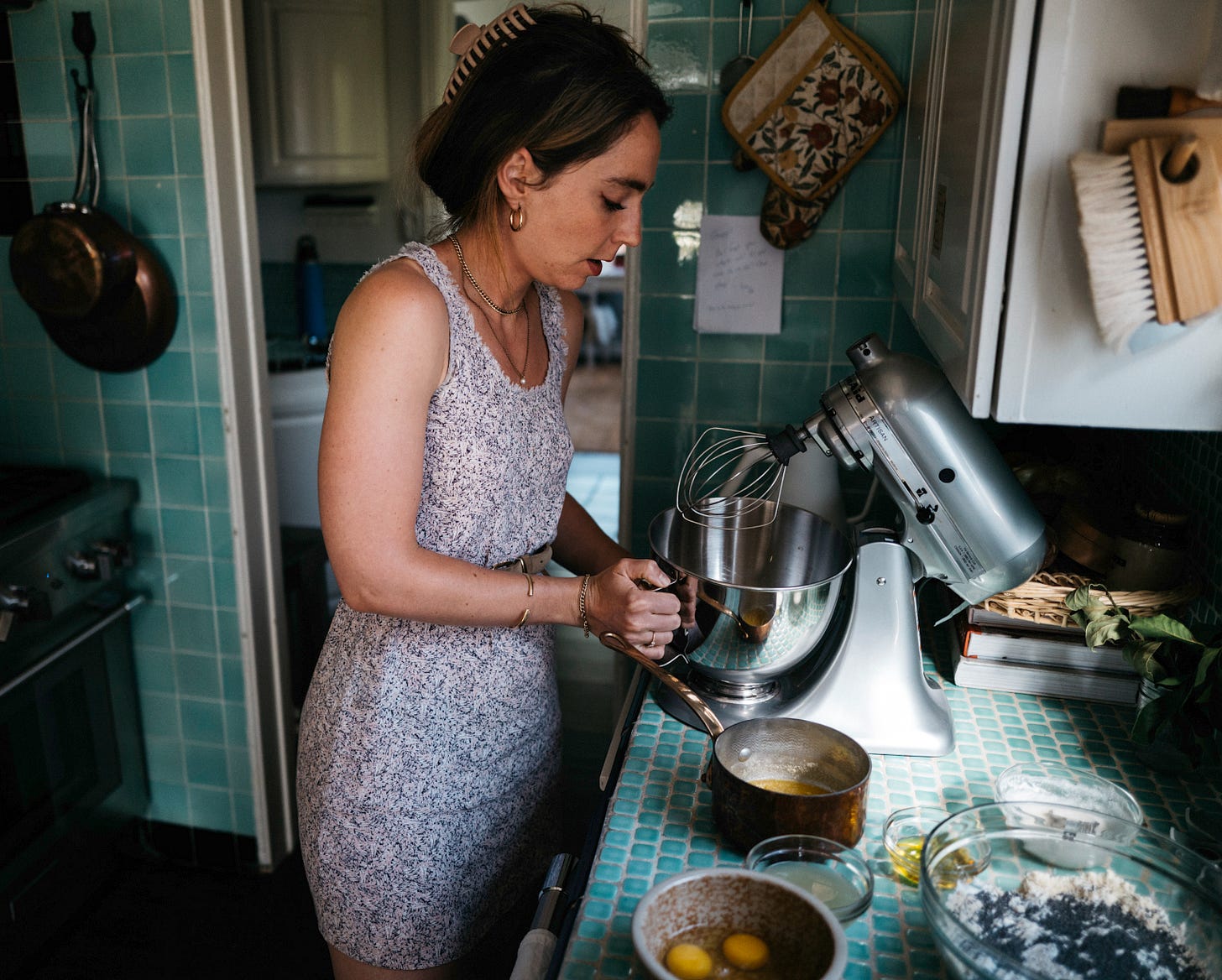
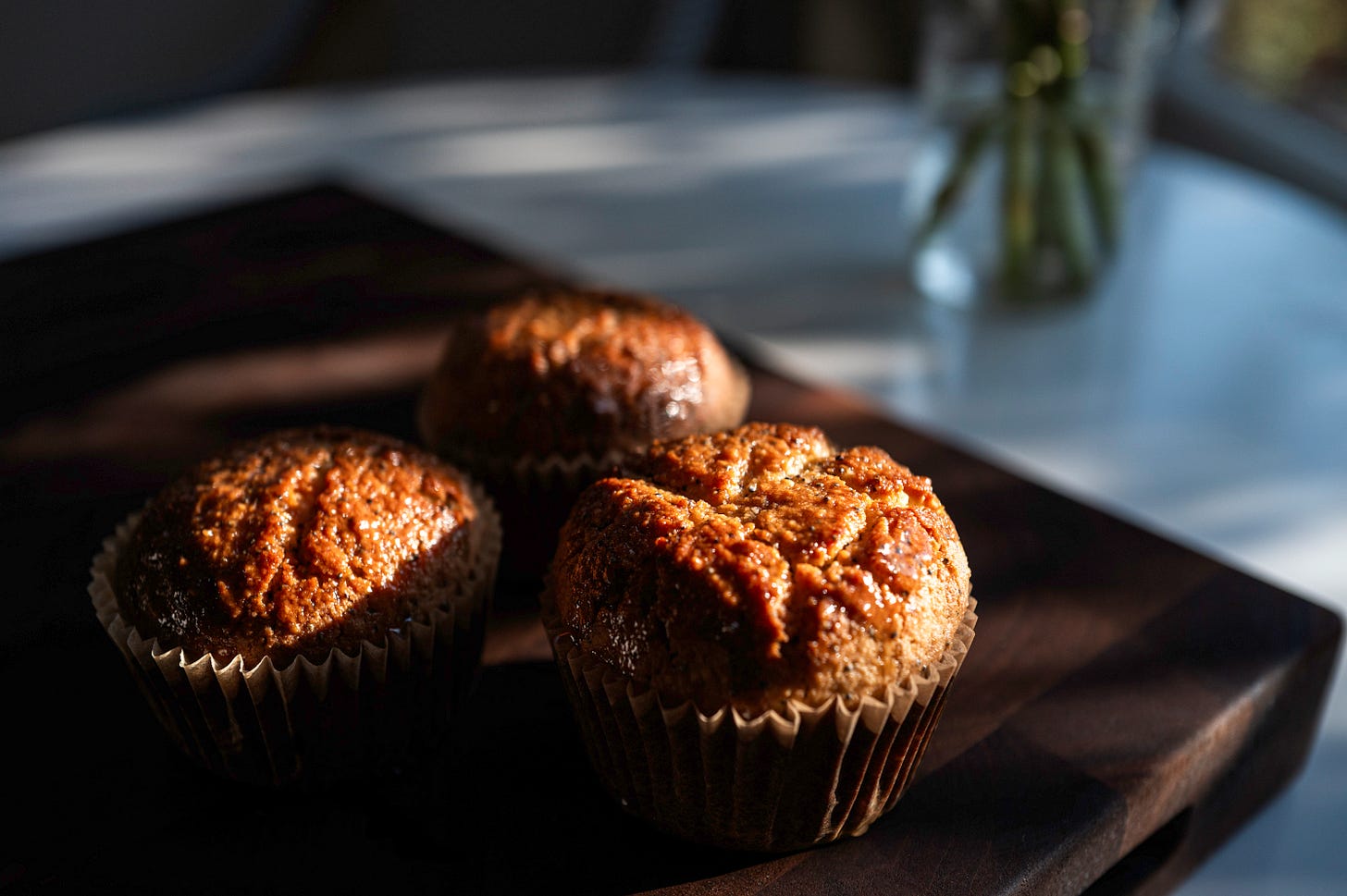



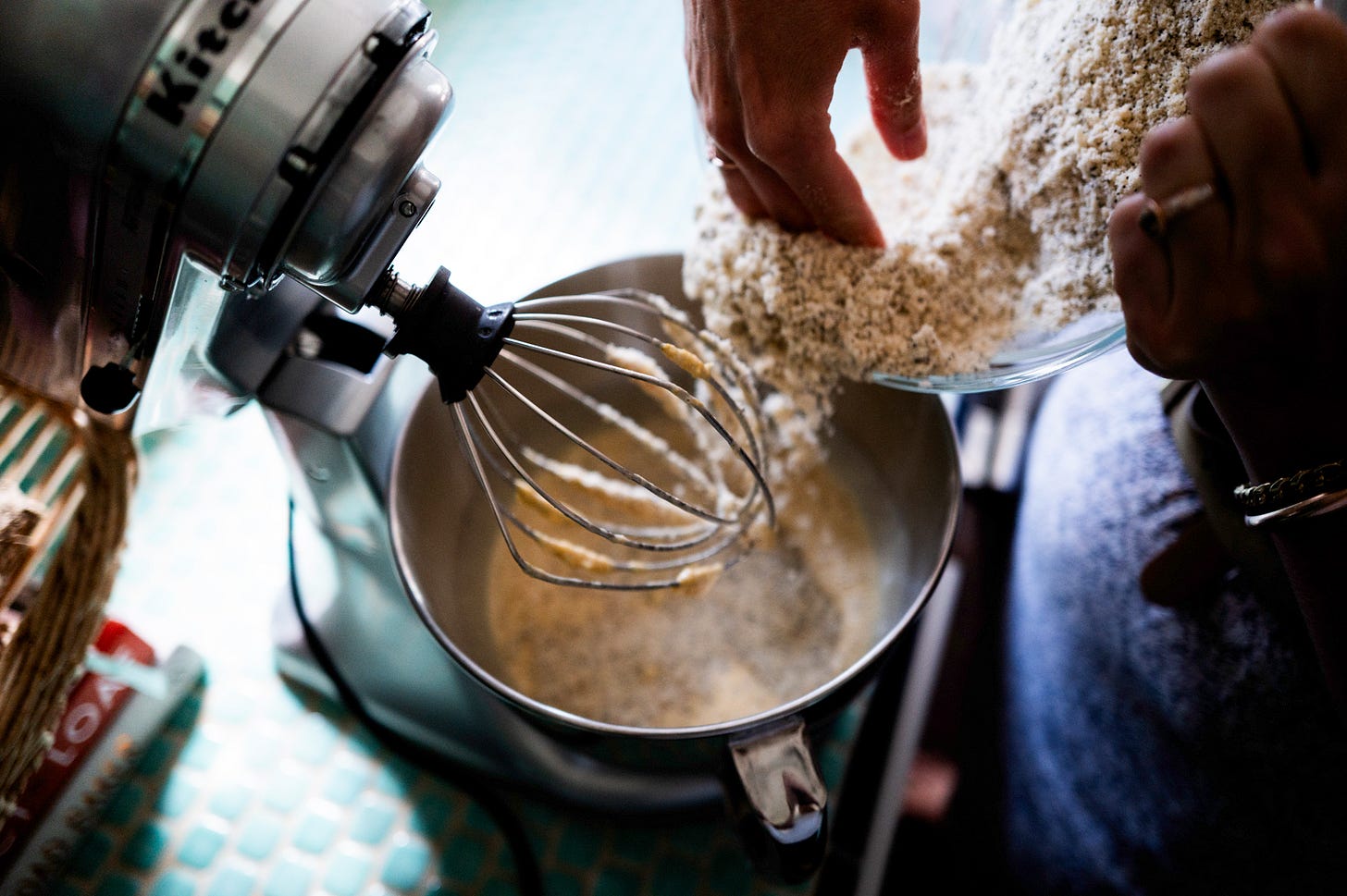

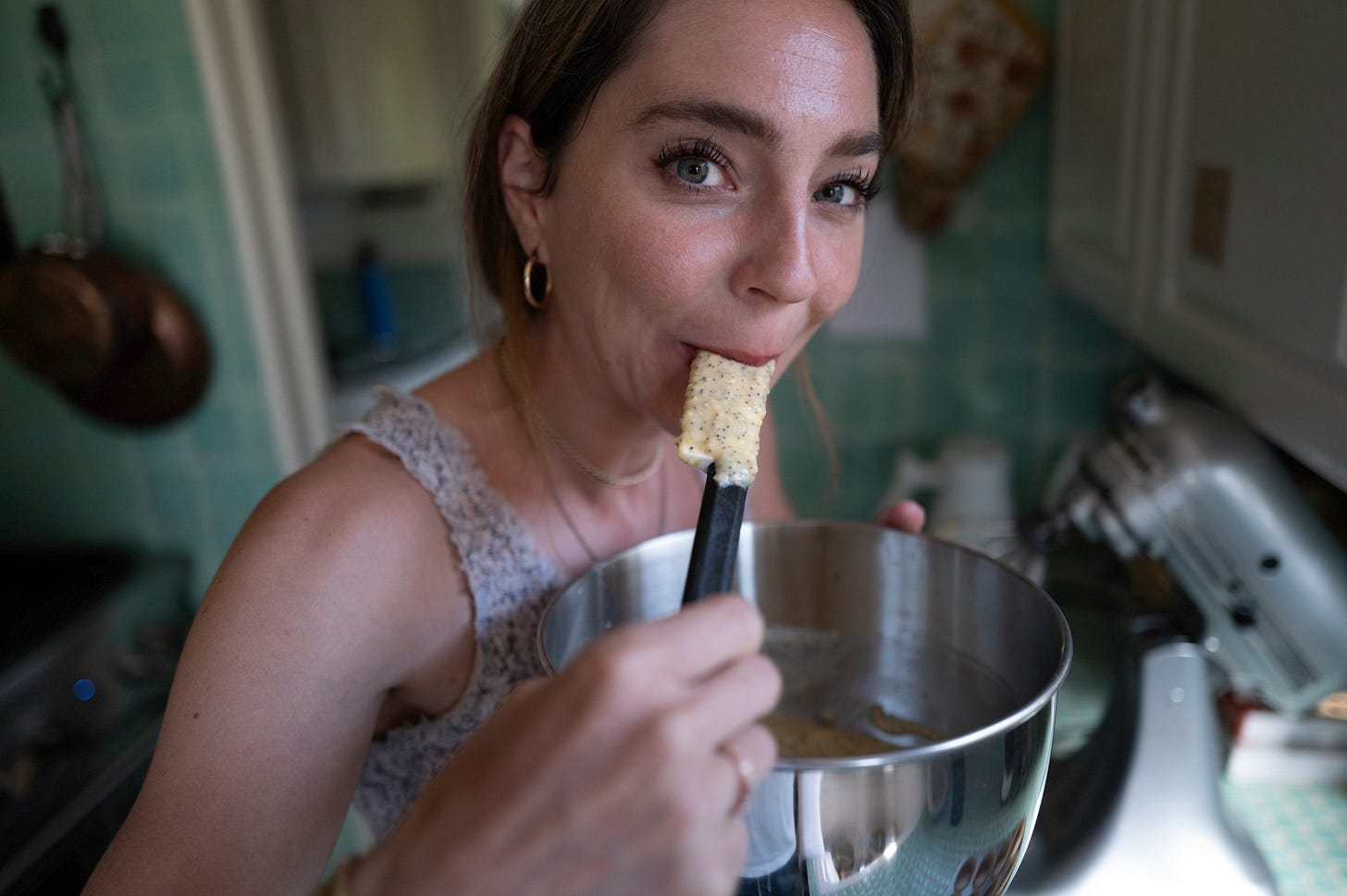
Samantha! That was my American girl doll growing up, too. Did you have the whole book collection of the original dolls? I poured over those things and constantly imagined myself living their lives.
Anyway, I admire your tenacity. Maybe you could’ve been a figure skater or had 12 kids and a reality show, but your life is pretty dang good because you simply keep getting up & cooking/baking/living & assigning gorgeous words to the process. Keep it up. Cheering you on.
Okay if you have both vanilla and almond extract is there one you think is better than the other?